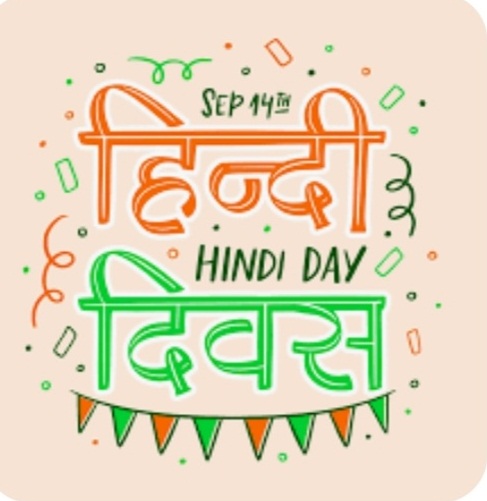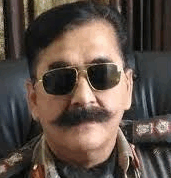Hindi Day: Rising Above the Rhetoric?
It is time this Hindi day of 2024, to shun the rhetoric and address the fundamentals of propagating our national language with all the sincerity it deserves

By Colonel Satish Singh Lalotra
Celebrations of any kind; be it personal or even official help in building lasting relationships. If the same celebration is upped by a few notches to include in its ambit an event of national importance, it takes on an entirely different hue altogether. In addition to the above facet, it marks recognizing hard work and efficiency associated with the cause underlying the celebration. The community that indulges in this celebration feels valued, fostering a sense of reconnect with each other as also with the world at large. The attention it draws to itself by these celebrations becomes larger than the cause itself.
Celebrations of a definite cause at the national level have within itself the innate quality to galvanize even the most indifferent of lot towards the said cause. A nation- state is known and recognized in the comity of world states by its three (3) symbols which are non-negotiable despite the change of governance at its power center. Going by the colloquial terminology as has been the wont in the armed forces –‘Naam, Namak and Nishan’ these three symbols are the defining ligatures which bind together a nation state in its entirety. Of the three symbols it is the last one i.e. ‘Nishan’ that has within itself the inherent capability to galvanize the masses towards the noble cause which it espouses. A National or official language is one such important ‘Nishan’ (symbol) which in addition to the national flag or emblem fosters within its people the sense of belongingness that no other symbol has the capacity or capability to do so.
Hindi language is one such ‘Nishan’ (symbol) embedded on the mental firmament of Indians in a manner that spans across regions, races and time lines to bestow upon them a unique quality of timelessness transcending centuries of our existence. This language written in Devanagiri script had evolved as a writing system which had within its ambit even languages like Sanskrit, Prakrit, Marathi, Konkani and Nepali languages. Though prevalent even before 1700 AD, it was only in the 8th century AD that the script developed and achieved its modern form by 1200 AD.
India being the land of diversities as no other nation in the world required a ‘lingua franca’ immediately after independence as a common ligature to bind its masses from Gujarat to Assam and Kashmir to Kanyakumari by way of official endorsement which came on 14th September 1949. Riding on the wave of a ‘Compromise formula’ ( Munshi-Ayyangar formula) during the drafting of the constitution of India on the languages that were to be accorded official status, Hindi language bore the official stamp of Republic of India on the date mentioned above. The Munshi-Ayyangar formula declared Hindi to be the official language of India’s federal government with English as an associate official language for 15 years during which Hindi’s formal lexicon would be developed. The compromise resolution or formula became articles 343-351 of India’s constitution which went into effect on 26th Jan 1950.
Notwithstanding 14th September being celebrated in India as Hindi Day, what exactly have been official strides in this regard to make Hindi as the true lingua franca in all its sincerity? Well GOI way back in 1976 constituted a parliamentary committee on official languages under section 4 of the ‘Official languages act, 1963. With active promotion of Hindi being mandated by article 351 of the constitution, the official committee set on its task to review and promote the use of Hindi in official communications. The first report of this committee was submitted in 1987. This committee was constituted and chaired by the Union Ministry of Home and had 30 members (20 from the lok Sabha & 10 from the Rajya Sabha). Unlike the other parliamentary panels which used to submit their report to the parliament, this language panel submits its report directly to the president of India who then shall cause the report to be tabled in the parliament.
Two years back in October 2022, the 11th volume of the report of the official language committee gave the following recommendations—
- Hindi to be the medium of instruction in IITs, IIMs and central universities in the Hindi speaking areas.
- The language used for communication in the administration should be Hindi, and efforts should be made to teach the curriculum in Hindi.
- High courts in other states, where proceedings are recorded in English or a regional language can make available translations in Hindi, because verdicts of high courts of other states are often cited in judgments.
- The use of Hindi, by the officers and other employees in the central government in Hindi speaking areas would reflect in their ‘Annual performance assessment report (APAR).
- It is the committee’s responsibility and role to see that the Hindi language is promoted in official communications.
- There are specific proposals to make the language in official letters and invitations simpler, with a deliberate attempt to reduce the usage of English language.
- Knowledge of Hindi to be compulsory in a number of government jobs.
The above law as per the government ought to be implemented only in Category ‘A’ states, in which the official language is Hindi. This includes states like Bihar, UP, Haryana, MP, Chhattisgarh, Rajasthan, and the UTs of Delhi and Andaman & Nicobar Islands. Category ‘B’ includes states which have usage of Hindi language up to 65% to include Gujarat, Maharashtra, Punjab, UTs of Chandigarh, Daman, Diu, Dadra and Nagar Haveli etc. With usage of Hindi dipping below 65% those states come under category ‘C’. Till now the efforts of the GOI to promote Hindi language included ‘three (3) language formulas’ as suggested by the Kothari commission in 1968 with first language being the mother tongue, the second language being English or other modern Indian languages in Hindi speaking areas and Hindi or English in non-Hindi speaking states. The third language was to be English or a modern Indian language in Hindi speaking areas; same was the case with non-Hindi speaking areas.
It would be known to the readers of this article that the NEP 2020 (New educational policy) which was ushered in the year 2020 as the name suggests, came after a hiatus of more than 35 years. The last national educational policy was set into motion in 1986. The present policy too harks back to the age old ‘three (3) language formula’ as enunciated by the ‘Kothari commission’ albeit with a changed template, laying stress on promoting Hindi, Sanskrit and regional languages. NEP 2020 says that mother tongue or the regional language would be the ‘preferred mode’ of instruction until class 5 and possibly class 8. The aim being to promote ‘multilingualism’ and ‘national unity’.
The constitutional status of Hindi has been very clearly delineated as per schedule 8 of the constitution of India, article 351, article 348(2) , article 343 (1) as well as section 7 of official language act of 1963. Despite a plethora of such legal provisions, the condition of Hindi as a national language has drawn very tepid response from the masses. The reasons are not far to seek. Ranging from an inferiority complex towards Hindi speaking people, skewed representations in the higher echelons of governance, cut throat competition for good jobs in the market driven by English as the lingua franca and a fetish among the parents for teaching their wards in the English medium schools are some of the drags that have slowed down Hindi as a medium of instruction to take off in realizing its full potential.
The singular credit of taking Hindi to its rightful position is reserved for our late PM Mr Atal Bihari Vajpyee who as India’s Foreign Minister way back in October 1977 was the first dignitary to have addressed the UNGA (UN general assembly) in Hindi drawing an instant applause from the world leaders. His address was a milestone in India’s exposition of its national language to the world body which till date had only seen the likes of our permanent UN representatives and even foreign ministers addressing in English language only. A typical example of shunning away the rhetoric and indulging in actuals.
It is time this Hindi day of 2024, to shun the rhetoric and address the fundamentals of propagating our national language with all the sincerity it deserves. After all can a national symbol (Nishan) be relegated to a secondary position, only to be remembered on specific days? It is these national symbols that not only sustain us in our peace time, but also when the country needs to project its identity in the world comity during times of strife.
Can anybody forget the sight of hundreds of Indian medical students holding aloft the Tricolour, another national symbol to help them identify as Indians in war torn Ukraine two years back to facilitate their return back to India? The faster we learn to keep our national symbols on a high pedestal the better for our future generations.
(The writer is a retired army officer and RK Columnist. He can be approached on his email: slalotra4729@gmail.com)




